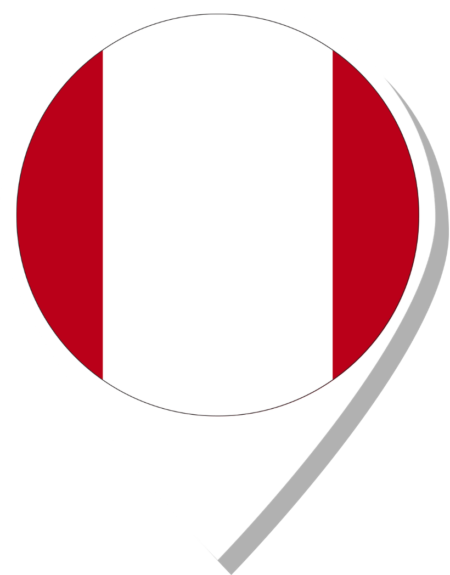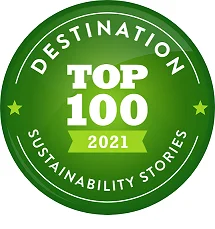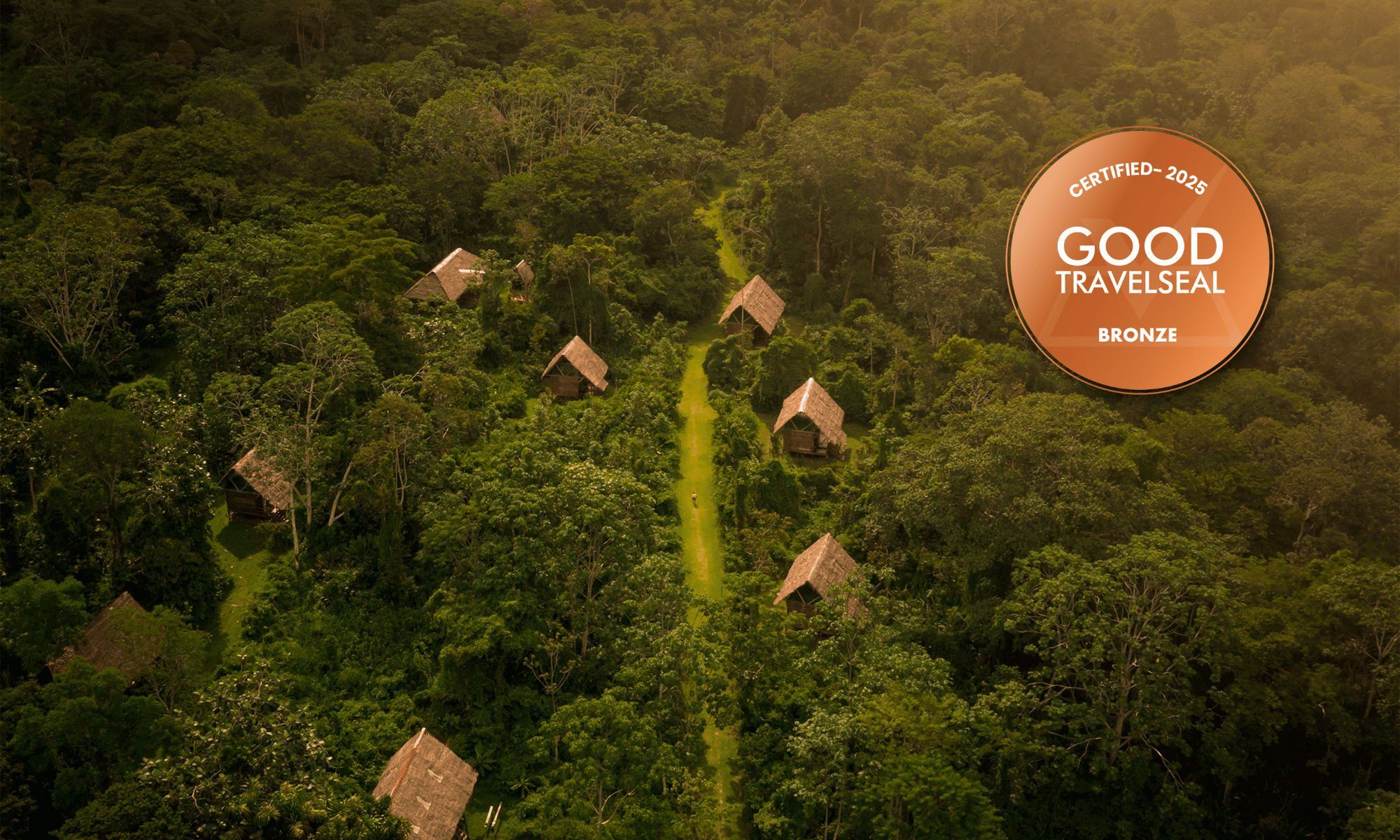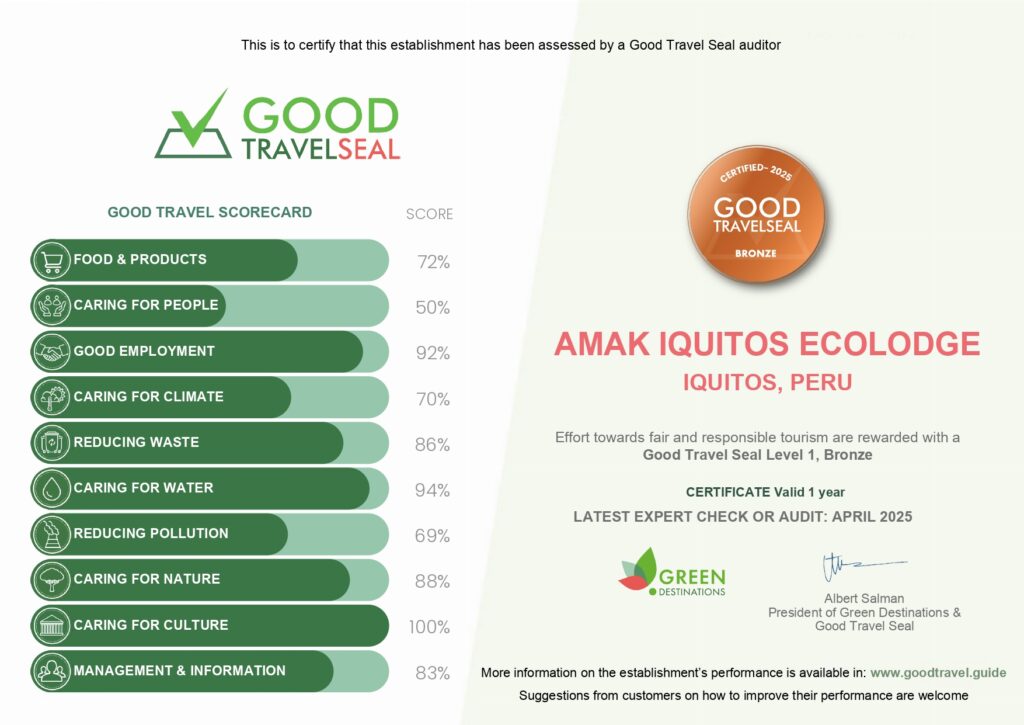© Colca Canyon, with depths of over 2000 meters, is one of the deepest canyons in the world
Peru

PERU is as complex as its most intricate and exquisite weavings. FESTIVALS mark ancient rites, the urban vanguard fuels innovation, and nature bestows splendid diversity. HOLIDAY EXPERIENCES are around every corner.
Not sure where to go?
Explore the options for a responsible trip
GOOD PLACES TO VISIT
Explore destinations that were awarded for their sustainability efforts
GOOD TRAVEL BUSINESSES
Discover accommodations, restaurants, shops and activities that are committed to sustainability. Their efforts are summarised in a SCORECARD (click on the picture). For the Good Travel Seal, the higher the number of stars or the level (level 3 is the highest), the more aspects of sustainability are checked by an independent auditor.
- Accommodations
- Restaurants
- Activities
- Others
Ämak Iquitos Ecolodge - All Inclusive
Good Travel Seal Level 1
At Ämak Iquitos, we don’t just offer a place to stay — we create meaningful experiences. Nestled deep in the Amazon, our eco-lodge is a gateway to nature, culture, and community. Every stay supports local families, preserves the rainforest, and promotes conscious travel. Built with love and local materials, our cabins blend comfort with sustainability. From jungle treks to river journeys, each moment invites reflection, connection, and wonder. Discover a place where tourism becomes transformation — where you leave not just rested, but inspired.
GOOD PRACTICE STORIES

Get inspired with stories from places and people that are acting for a fair and responsible tourism
Islas Cavinzas e Islotes Palomino
As unregulated fishing activities and unauthorized vessels conducting tourism activities in the Cavinzas Islands and Palomino Islets are increasing , stress on resources, food shortage and threatening marine wildlife are growing significantly. The National Service of State-Protected Natural Areas (NSPNA) was launched to formalize and regulate tourism activities on the islands. This initiative involves authorities, associations, and tourism operators in Callao. All stakeholders joined efforts to monitor activities, to help minimize the disturbance to the marine wildlife on the islands.
Kuelap Gocta
The Kuelap Monumental Archaeological Zone and the Gocta waterfall are e two main tourist attractions of high cultural and natural significance and are facing inadequate solid waste management actions, leading to contamination of the environment , affecting the health and the image of the destination. To address this issue, the Amazonas regional government launched in 2000 an initiative involving municipalities, locals and the tourism sector to identify problems and implement solutions. Consequently, 4 sanitary landfill were constructed benefiting 28 districts within the region. The project has established a commitment to sustainability, raising awareness, joining forces and improving the well-being of the inhabitants and the perception of the destination , to preserve the vital ecological and cultural treasures of the region.
Los Órganos
The coastal town of Los Órganos in Piura gradually increased tourism activity thanks to its enchanting beaches and marine life. This growth posed multiple challenges for land management, such as pollution and pressure on natural resources, land use planning and tourism activity. To address these problems, the District Municipality of Los Órganos led the implementation of a collaborative management strategy to promote sustainable tourism development. Through alliances with the Regional Government of Piura and with the collaboration of local and international NGOs, tourism operators and local businesses, sustainable practices were adopted through strategic planning actions, capacity building programs, awareness campaigns, working groups for marine fauna sightings, and enactment of ordinances.
Parque Nacional Tingo María
Women in the Tingo María National Park area faced social and economic challenges, lacked empowerment, and were not involved in conservation efforts. Training and empowerment programs were implemented, promoting gender equality and involving women in conservation and sustainable economic activities. Women became active participants in conservation, started their own businesses, improved their quality of life, and contributed to the sustainable management of the park.
Reserva Nacional Allpahuayo Mishana
Allpahuayo Mishana National Reserve was established to protect the area from the depletion of natural resources, which have been a great support of the local economy. The establishment of the nature reserve become the best defense of the rights of local people
against illegal foreign extractors and it also lets the local population learn how to sustainably use the natural resources they have and see tourism as an opportunity.
Sustainability
Sustainability in Peru is a growing focus, driven by the country’s biodiversity and environmental challenges. Peru is committed to preserving its natural treasures, such as the Amazon rainforest, which is home to an incredible array of wildlife. Conservation efforts are also evident in initiatives to protect endangered species like the Andean condor and the Peruvian jaguar. The country is embracing renewable energy sources like hydropower and promoting eco-tourism in areas like the Sacred Valley and the Manu National Park. Sustainable agriculture practices, especially in the production of coffee and quinoa, are gaining ground. Despite challenges like deforestation and pollution, Peru’s dedication to sustainability underlines its commitment to safeguarding its natural heritage and addressing climate change.
Travel tips from our editors

Getting around
Getting around in Peru is relatively straightforward, with a range of transportation options. Buses connect major cities and towns. Consider using eco-friendly transportation options like shared minibuses or exploring cities on foot or by bike to reduce your carbon footprint. Additionally, opt for tour operators and transportation providers that prioritize sustainability practices, such as responsible tourism and eco-friendly vehicles, to minimize your environmental impact while enjoying Peru’s diverse landscapes.
Tourism & People
Tourism in Peru offers a captivating blend of rich cultural heritage and breathtaking natural wonders. Visitors like to explore iconic archaeological sites like Machu Picchu, delve into the vibrant culture of cities like Cusco, and embark on adventures in the Amazon rainforest. The Peruvian people, known for their warm hospitality, welcome travelers with open arms, often inviting them to share in local traditions and celebrations. The cuisine is a highlight, with renowned dishes like ceviche and lomo saltado showcasing Peru’s diverse flavors. Whether hiking the Inca Trail or savoring the flavors of a local market, Peru offers an unforgettable travel experience that combines the warmth of its people with the allure of its landscapes and history.
Nature & Wildlife
From the dense Amazon rainforest teeming with diverse species like jaguars, macaws, and pink dolphins to the high-altitude Andes Mountains, home to unique creatures like the vicuña and Andean condor, Peru’s ecosystems are a sanctuary for biodiversity. The country’s vast coastline is frequented by marine life, including humpback whales and sea turtles. There are numerous protected areas, such as the Tambopata National Reserve and the Paracas National Reserve, that preserve these precious habitats. With a rich number of landscapes, Peru offers an incredible array of flora and fauna, making it a paradise for nature enthusiasts and wildlife lovers alike.
Sustainability Recognitions
Brazil has 9 destinations featured in the Top 100 Sustainable Destinations 2021.

Other sustainability certifications can be seen here (English) and here (Portuguese).

Fernanda Rodak | Page Editor
“Brazil is a worldwide known hotspot for biodiversity as well as home to a multitude of cultural expressions. The natural and cultural heritage and immense variety of tourism experiences in the country are valuable assets for its competitiveness. Yet, as we envision a post Covid-19 era, sustainability in tourism becomes crucial to build resilience and guarantee the long-lasting health of Brazil’s ecosystems and well-being of the hosting communities. This would also ensure an active contribution of the country’s tourism sector to the Sustainable Development Goals.”
Visit other destinations nearby?
Get in touch
Support
We are a multicultural, creative and dedicated team working to promote sustainable tourism. Join us in our fight against the climate crisis, single-use plastics and over-tourism!


